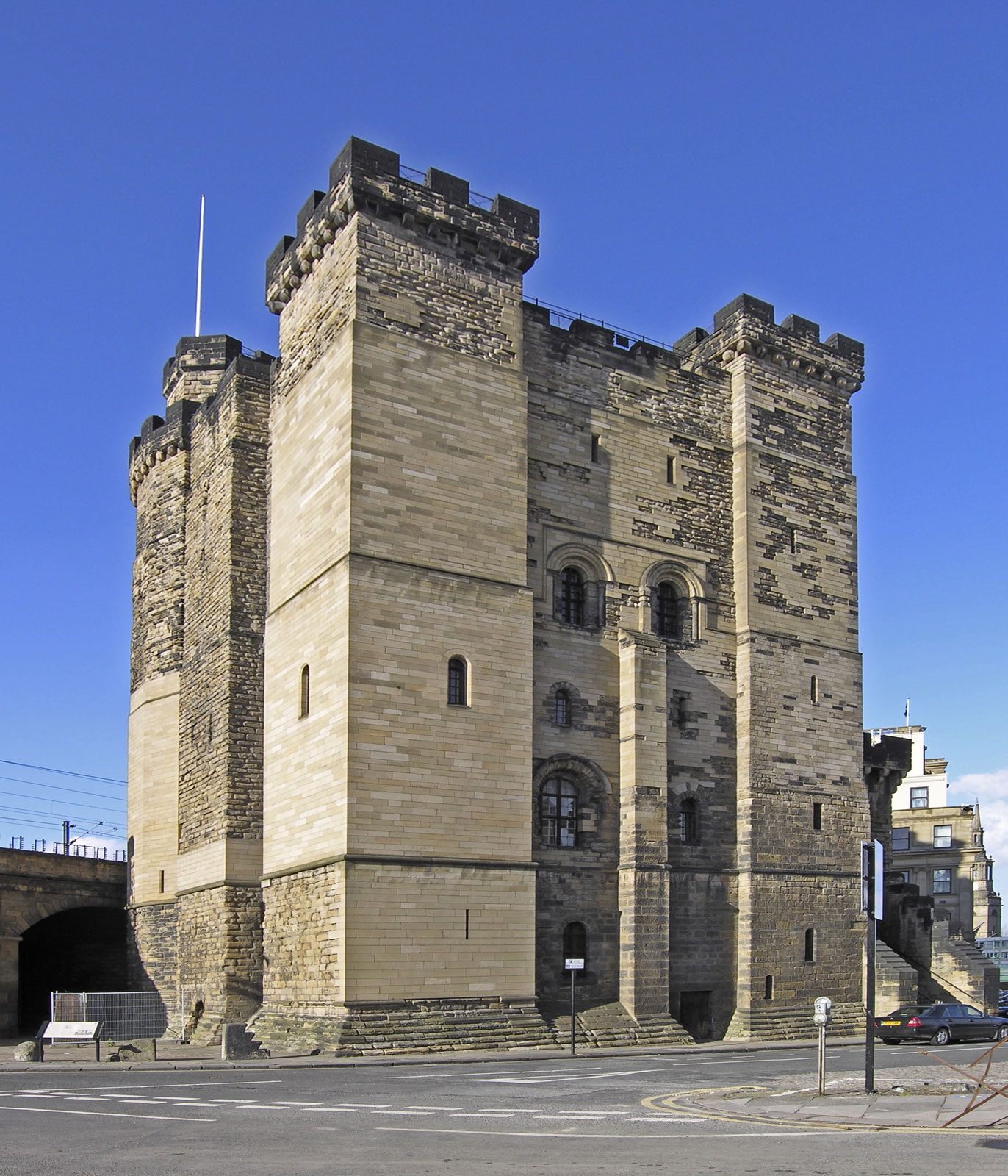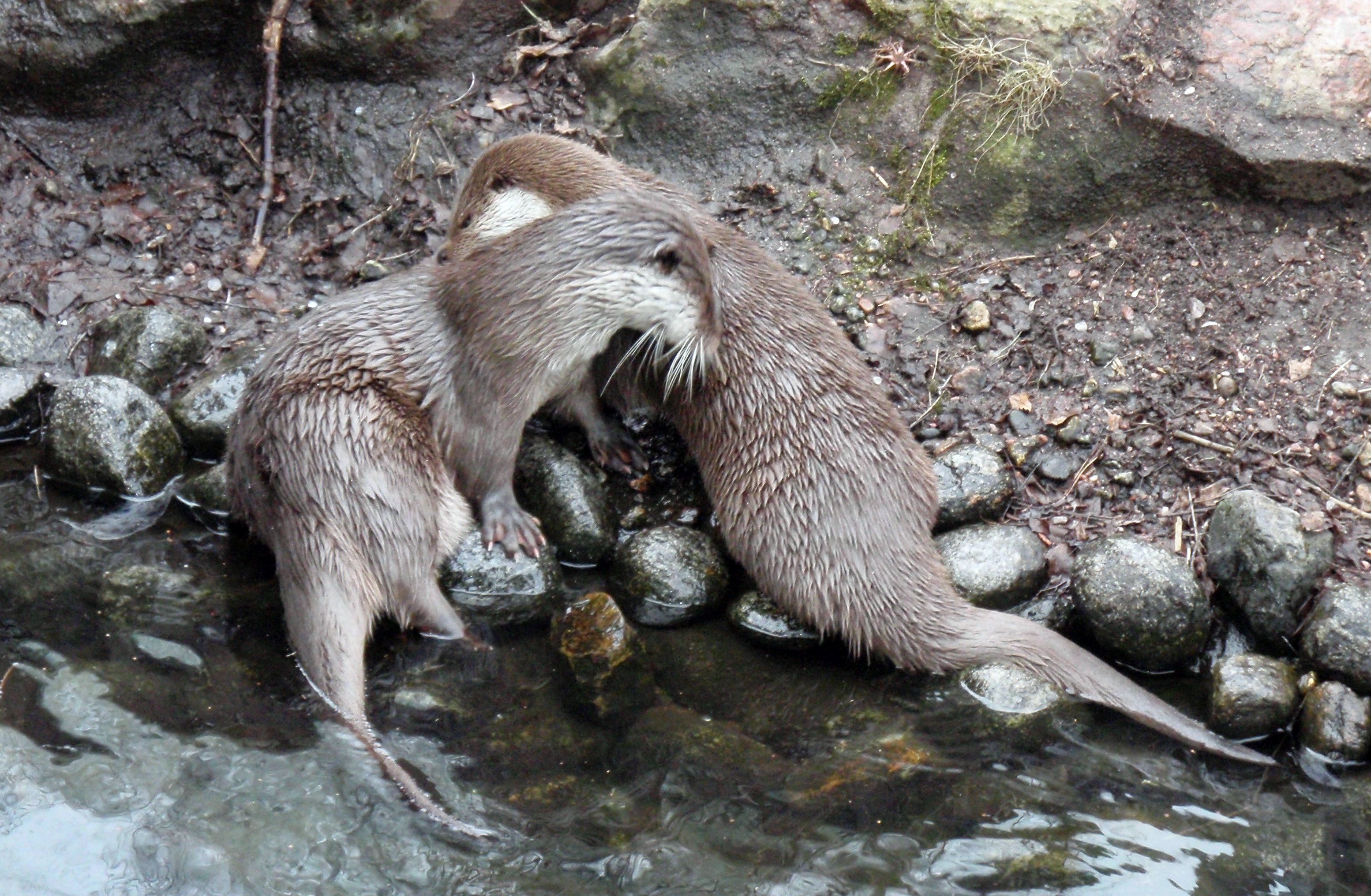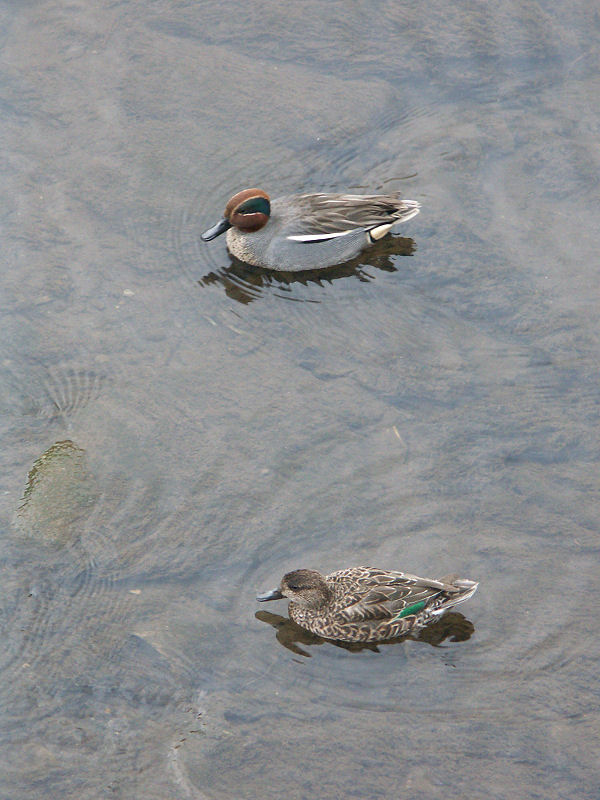|
Gosforth Nature Reserve
Gosforth Nature Reserve is a wildlife haven in Tyne and Wear, England. It includes extensive woodland and wetland habitats and is managed by the Natural History Society of Northumbria. Access to the reserve is restricted to NHSN members and those in possession of a valid day pass. Dog walking and other recreational activities are not permitted on site. The reserve is part of Gosforth Park, the old estate of Gosforth House. History In medieval times, what is now Gosforth Nature Reserve would have been agricultural land, there is some remaining evidence of ridge and furrow. The general habitat in the area would have been heathland, hence the name of the nearby village of West Moor and the nearby track called Heathery Lane. When the Brandling family took over the land and built their large estate house they had the surrounding area landscaped, as was the fashion of the day. This included planting new woodland and creating a new lake for boating and fishing. From historic maps it ap ... [...More Info...] [...Related Items...] OR: [Wikipedia] [Google] [Baidu] |
Newcastle Upon Tyne
Newcastle upon Tyne ( RP: , ), or simply Newcastle, is a city and metropolitan borough in Tyne and Wear, England. The city is located on the River Tyne's northern bank and forms the largest part of the Tyneside built-up area. Newcastle is also the most populous city of North East England. Newcastle developed around a Roman settlement called Pons Aelius and the settlement later took the name of a castle built in 1080 by William the Conqueror's eldest son, Robert Curthose. Historically, the city’s economy was dependent on its port and in particular, its status as one of the world's largest ship building and repair centres. Today, the city's economy is diverse with major economic output in science, finance, retail, education, tourism, and nightlife. Newcastle is one of the UK Core Cities, as well as part of the Eurocities network. Famous landmarks in Newcastle include the Tyne Bridge; the Swing Bridge; Newcastle Castle; St Thomas’ Church; Grainger Town includin ... [...More Info...] [...Related Items...] OR: [Wikipedia] [Google] [Baidu] |
Sedge Warbler
The sedge warbler (''Acrocephalus schoenobaenus'') is an Old World warbler in the genus '' Acrocephalus''. It is a medium-sized warbler with a brown, streaked back and wings and a distinct pale supercilium. Sedge warblers are migratory, crossing the Sahara to get from their European and Asian breeding grounds to spend winter in Africa. The male's song is composed of random chattering phrases and can include mimicry of other species. The sedge warbler is mostly insectivorous. Taxonomy The sedge warbler was formally described by the Swedish naturalist Carl Linnaeus in 1758 in the tenth edition of his ''Systema Naturae'' under the binomial name ''Motacilla schoenobaenus''. The species is now placed in the genus '' Acrocephalus'' that was introduced in 1811 by Johann Andreas Naumann and his son Johann Friedrich Naumann. British ornithologists did not distinguish the species from the Eurasian reed warbler until the 18th century. The genus name ''Acrocephalus'' is from Ancient Greek ... [...More Info...] [...Related Items...] OR: [Wikipedia] [Google] [Baidu] |
Quercus Robur
''Quercus robur'', commonly known as common oak, pedunculate oak, European oak or English oak, is a species of flowering plant in the beech and oak family, Fagaceae. It is a large tree, native to most of Europe west of the Caucasus. It is widely cultivated in temperate regions elsewhere and has escaped into the wild in scattered parts of China and North America. Description ''Quercus robur'' is a large deciduous tree, with circumference of grand oaks from to an exceptional . The Majesty Oak with a circumference of is the thickest tree in Great Britain. The Brureika (Bridal Oak) in Norway with a circumference of (2018) and the Kaive Oak in Latvia with a circumference of are among the thickest trees in Northern Europe. The largest historical oak was known as the Imperial Oak from Bosnia and Herzegovina. This specimen was recorded at 17.5 m in circumference at breast height and estimated at over 150 m³ in total volume. It collapsed in 1998. The species has lobed and ... [...More Info...] [...Related Items...] OR: [Wikipedia] [Google] [Baidu] |
Gosforth Park Nature Reserve - Geograph
Gosforth is a suburb of the city and metropolitan borough of Newcastle upon Tyne, England. It constituted a separate urban district from 1895 until 1974 before officially merging with the city of Newcastle upon Tyne. In 2001, it had a population of 23,620. There are four electoral wards on Newcastle City Council that include parts of Gosforth: Dene and South Gosforth, Fawdon and West Gosforth, Gosforth, and Parklands. Gosforth is located to the north of the city centre. History The origin of the area's name is thought to have come from 'Gese Ford', meaning 'the ford over the Ouse', referring to a crossing over the local River Ouse or Ouseburn. However, as it is first recorded as 'Goseford' in 1166, others think that the name originates from the Old English 'Gosaford', meaning 'a ford where the geese dwell'. Richard Welford notes that the names of North and South Gosforth come from the north and south of the River Ouse. South Gosforth was first mentioned in 1319, when it ... [...More Info...] [...Related Items...] OR: [Wikipedia] [Google] [Baidu] |
Corallorhiza Trifida
''Corallorhiza trifida'', commonly known as early coralroot, northern coralroot, or yellow coralroot, is a coralroot orchid native to North America and Eurasia, with a circumboreal distribution. The species has been reported from the United States, Canada, Russia, China, Japan, Korea, India, Nepal, Kashmir, Pakistan, and almost every country in Europe.Gleason, H. A. & A.J. Cronquist. 1991. Manual of the Vascular Plants of Northeastern United States and Adjacent Canada (ed. 2) i–910. New York Botanical Garden, Bronx. Description ''Corallorhiza trifida'' is yellowish green in color, leafless, and partially myco-heterotrophic, deriving some, but not all of its nutrients from association with fungi of genus '' Tomentella''.Zimmer, K., et al. (2008)The ectomycorrhizal specialist orchid ''Corallorhiza trifida'' is a partial myco-heterotroph.''New Phytologist'' 178:2 395-400. It also contains chlorophyll Chlorophyll (also chlorophyl) is any of several related green pigme ... [...More Info...] [...Related Items...] OR: [Wikipedia] [Google] [Baidu] |
Eurasian Water Shrew
The Eurasian water shrew (''Neomys fodiens''), known in the United Kingdom as the water shrew, is a relatively large shrew, up to long, with a tail up to three-quarters as long again. It has short, dark fur, often with a few white tufts, a white belly, and a few stiff hairs around the feet and tail. It lives close to fresh water, hunting aquatic prey in the water and nearby. Its fur traps bubbles of air in the water which greatly aids its buoyancy, but requires it to anchor itself to remain underwater for more than the briefest of dives. Like many shrews, the water shrew has venomous saliva, making it one of the few venomous mammals, although it is not able to puncture the skin of large animals, nor that of humans. Highly territorial, it lives a solitary life and is found throughout the northern part of Europe and Asia, from Britain to Korea. Description The Eurasian water shrew grows to a length of about long with a tail length of and weight of . The dense short fur on the ... [...More Info...] [...Related Items...] OR: [Wikipedia] [Google] [Baidu] |
European Water Vole
The European water vole or northern water vole (''Arvicola amphibius''), is a semi-aquatic rodent. It is often informally called the water rat, though it only superficially resembles a true rat. Water voles have rounder noses than rats, deep brown fur, chubby faces and short fuzzy ears; unlike rats their tails, paws and ears are covered with hair. In the wild, on average, water voles only live about five months. Maximum longevity in captivity is two and a half years. Appearance Water voles reach in length, plus a tail which is about half the length of the body. Weights reported for adults are variable. It is possible for large, optimal adults to weigh as much as However, these are peak weights. Elsewhere, the mean body mass has been reported as , although this figure includes immature water voles. The minimum weight to successfully breed as well as to survive winter is reportedly in females and in males.Yavuz, Güliz, Ercüment Çolak, and Teoman Kankılıç. ''Investigat ... [...More Info...] [...Related Items...] OR: [Wikipedia] [Google] [Baidu] |
European Otter
The Eurasian otter (''Lutra lutra''), also known as the European otter, Eurasian river otter, common otter, and Old World otter, is a semiaquatic mammal native to Eurasia. The most widely distributed member of the otter subfamily (Lutrinae) of the weasel family (Mustelidae), it is found in the waterways and coasts of Europe, many parts of Asia, and parts of northern Africa. The Eurasian otter has a diet mainly of fish, and is strongly territorial. It is endangered in some parts of its range, but is recovering in others. Description The Eurasian otter is a typical species of the otter subfamily. Brown above and cream below, these long, slender creatures are well-equipped for their aquatic habits. Their bones show osteosclerosis, increasing their density to reduce buoyancy. This otter differs from the North American river otter by its shorter neck, broader visage, the greater space between the ears and its longer tail. However, the Eurasian otter is the only otter in much of i ... [...More Info...] [...Related Items...] OR: [Wikipedia] [Google] [Baidu] |
Northern Shoveler
The northern shoveler (; ''Spatula clypeata''), known simply in Britain as the shoveler, is a common and widespread duck. It breeds in northern areas of Europe and across the Palearctic and across most of North America, wintering in southern Europe, the Indian subcontinent, Southeast Asia, Central, the Caribbean, and northern South America. It is a rare vagrant to Australia. In North America, it breeds along the southern edge of Hudson Bay and west of this body of water, and as far south as the Great Lakes west to Colorado, Nevada, and Oregon. The northern shoveler is one of the species to which the ''Agreement on the Conservation of African-Eurasian Migratory Waterbirds'' (AEWA) applies. The conservation status of this bird is Least Concern. Taxonomy The northern shoveler was first formally described by the Swedish naturalist Carl Linnaeus in 1758 in the tenth edition of his ''Systema Naturae''. He introduced the binomial name ''Anas clypeata''. A molecular phylogentic ... [...More Info...] [...Related Items...] OR: [Wikipedia] [Google] [Baidu] |
Eurasian Teal
The Eurasian teal (''Anas crecca''), common teal, or Eurasian green-winged teal is a common and widespread duck that breeds in temperate Eurosiberia and migrates south in winter. The Eurasian teal is often called simply the teal due to being the only one of these small dabbling ducks in much of its range. The bird gives its name to the blue-green colour teal. It is a highly gregarious duck outside the breeding season and can form large flocks. It is commonly found in sheltered wetlands and feeds on seeds and aquatic invertebrates. The North American green-winged teal (''A. carolinensis'') was formerly (and sometimes is still) considered a subspecies of ''A. crecca''. Taxonomy The Eurasian teal belongs to the "true" teals, a group of small '' Anas'' dabbling ducks closely related to the mallard (''A. platyrhynchos'') and its relatives; that latter group in fact seems to have evolved from a true teal. It forms a superspecies with the green-winged teal and the ... [...More Info...] [...Related Items...] OR: [Wikipedia] [Google] [Baidu] |
Eurasian Wigeon
The Eurasian wigeon or European wigeon (''Mareca penelope''), also known as the widgeon or the wigeon, is one of three species of wigeon in the dabbling duck genus ''Mareca''. It is common and widespread within its Palearctic range. Taxonomy The Eurasian wigeon was described by Carl Linnaeus in his landmark 1758 10th edition of ''Systema Naturae'' under the binomial name ''Anas penelope''. ''Anas'' is the Latin word for "duck", and ''penelope'' refers to a duck that was supposed to have rescued Penelope when she was thrown into the sea. Her name derives from Ancient Greek πήνη ''pene'', "braid" and ὤψ ''ops'' "appearance", from the ruse she used to deter suitors while her husband Ulysses was absent. Description This dabbling duck is long with a wingspan, and a weight of . The breeding male has grey flanks and back, with a black rear end, a dark green speculum and a brilliant white patch on upper wings, obvious in flight or at rest. It has a pink breast, white bell ... [...More Info...] [...Related Items...] OR: [Wikipedia] [Google] [Baidu] |
Common Kingfisher
The common kingfisher (''Alcedo atthis''), also known as the Eurasian kingfisher and river kingfisher, is a small kingfisher with seven subspecies recognized within its wide distribution across Eurasia and North Africa. It is resident in much of its range, but bird migration, migrates from areas where rivers freeze in winter. This house sparrow, sparrow-sized bird has the typical short-tailed, large-headed kingfisher profile; it has blue upperparts, orange underparts and a long bill. It feeds mainly on fish, caught by diving, and has special visual adaptations to enable it to see prey under water. The glossy white eggs are laid in a nest at the end of a burrow in a riverbank. Taxonomy The common kingfisher was first described by Carl Linnaeus in the 10th edition of Systema Naturae, 10th edition of his ''Systema Naturae'' in 1758 as ''Gracula atthis''. The modern binomial name derives from the Latin ', 'kingfisher' (from Greek language, Greek , '), and ''Atthis'', a beautiful you ... [...More Info...] [...Related Items...] OR: [Wikipedia] [Google] [Baidu] |


.jpg)



.jpg)

